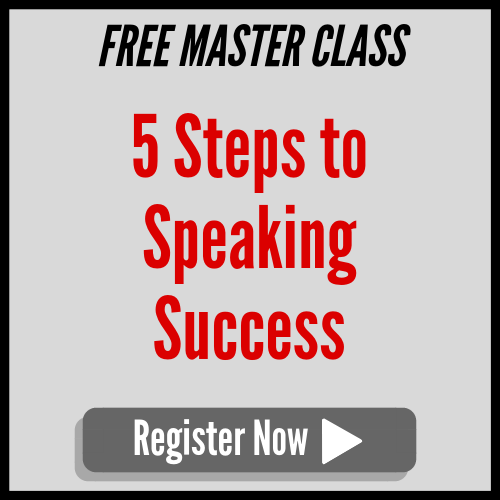Guest post by Rick Burnes
Inbound Marketing is marketing focused on getting found by customers.
In traditional marketing (outbound marketing) companies focus on finding customers. They use techniques that are poorly targeted and that interrupt people. They use cold-calling, print advertising, T.V. advertising, junk mail, spam and trade shows.
Technology is making these techniques less effective and more expensive. Caller ID blocks cold calls, TiVo makes T.V. advertising less effective, spam filters block mass emails and tools like RSS are making print and display advertising less effective. It's still possible to get a message out via these channels, but it costs more.
Inbound Marketers flip outbound marketing on its head.
Instead of interrupting people with television ads, they create videos that potential customers want to see. Instead of buying display ads in print publications, they create their own blog that people subscribe to and look forward to reading. Instead of cold calling, they create useful content and tools so that people call them looking for more information.
Instead of driving their message into a crowd over and over again like a sledgehammer, they attract highly qualified customers to their business like a magnet:

The most successful Inbound Marketing campaigns have three key components:
(1) Content - Content is the substance of any Inbound Marketing campaign. It is the information or tool that attracts potential customers to your site or your business.
(2) Search Engine Optimization - SEO makes it easier for potential customers to find your content. It is the practice of building your site and inbound links to your site to maximize your ranking in search engines, where most of your customers begin their buying process.
(3) Social Media - Social media amplifies the impact of your content. When your content is distributed across and discussed on networks of personal relationships, it becomes more authentic and nuanced, and is more likely to draw qualified customers to your site.

Why Inbound Marketing Makes Sense in a Recession
As the economy slows down, companies are turning to Inbound Marketing because it is a more efficient way of allocating marketing resources than traditional, outbound marketing. As our CEO, Brian Halligan, puts it, when you're inbound marketing, the thickness of your brain matters a lot more than the thickness of your wallet.
There are three specific ways Inbound Marketing improves on the efficiency of traditional marketing:
(1) It Costs Less - Outbound marketing means spending money - either by buying ads, buying email lists or renting huge booths at trade shows. Inbound Marketing means creating content and talking about it. A blog costs nothing to start. A Twitter account is free, too. Both can draw thousands of customers to your site. The marketing ROI from inbound campaigns is higher.
(2) Better Targeting - Techniques like cold-calling, mass mail and email campaigns are notoriously poorly targeted. You're reaching out to individuals because of one or two attributes in a database. When you do Inbound Marketing, you only approach people who self-qualify themselves. They demonstrate an interest in your content, so they are likely to be interested in your product.
(3) It's an Investment, Not an Ongoing Expense - When you buy pay-per-click advertising on search engines, its value is gone as soon as you pay for it. In order to maintain a position at the top of Google's paid results, you have to keep paying. However, if you invest that money in quality content that ranks in Google's organic results, you'll be there until somebody displaces you.
p.s. If you'd like some personalized help - and your very own customized marketing and sales toolkit PLUS an easy-to-implement inbound marketing game plan with 1-on-1 guidance for 90 days, get all the details here.
Source: http://blog.hubspot.com/blog/tabid/6307/bid/4416/Inbound-Marketing-the-Next-Phase-of-Marketing-on-the-Web.aspx#ixzz1FnFB3inO

 Here is some typical web copy for a speaking, training or coaching business:
Here is some typical web copy for a speaking, training or coaching business:  "Nearly all rich and powerful people are not notably talented, educated, charming, or good-looking. They become rich and powerful by wanting to be rich and powerful."
"Nearly all rich and powerful people are not notably talented, educated, charming, or good-looking. They become rich and powerful by wanting to be rich and powerful."  A colleague recently said to me, “No one has found the top secret formula for successful online marketing yet.”
A colleague recently said to me, “No one has found the top secret formula for successful online marketing yet.” Just came across this terrific item from my fellow
Just came across this terrific item from my fellow  As a marketing speaker and marketing coach, some clients have, on occasion, accused me of being "all about the money" and ignoring or downplaying the other (very) important parts of their business.
As a marketing speaker and marketing coach, some clients have, on occasion, accused me of being "all about the money" and ignoring or downplaying the other (very) important parts of their business. As a marketing speaker and marketing coach who works with professional speakers, consultants, and professional services firms, one of THE most frequent questions I get is "How do I find the best places for me to speak so I generate business?"
As a marketing speaker and marketing coach who works with professional speakers, consultants, and professional services firms, one of THE most frequent questions I get is "How do I find the best places for me to speak so I generate business?" Testimonials are among the most powerful marketing ammunition in your marketing arsenal. As a small business marketing speaker, I'm often asked if testimonials are important - and if so, why?
Testimonials are among the most powerful marketing ammunition in your marketing arsenal. As a small business marketing speaker, I'm often asked if testimonials are important - and if so, why?  From Fred Smith, founder of Federal Express:
From Fred Smith, founder of Federal Express:  "We often talk about ourselves as if we have permanent genetic flaws that can never be altered."
"We often talk about ourselves as if we have permanent genetic flaws that can never be altered."